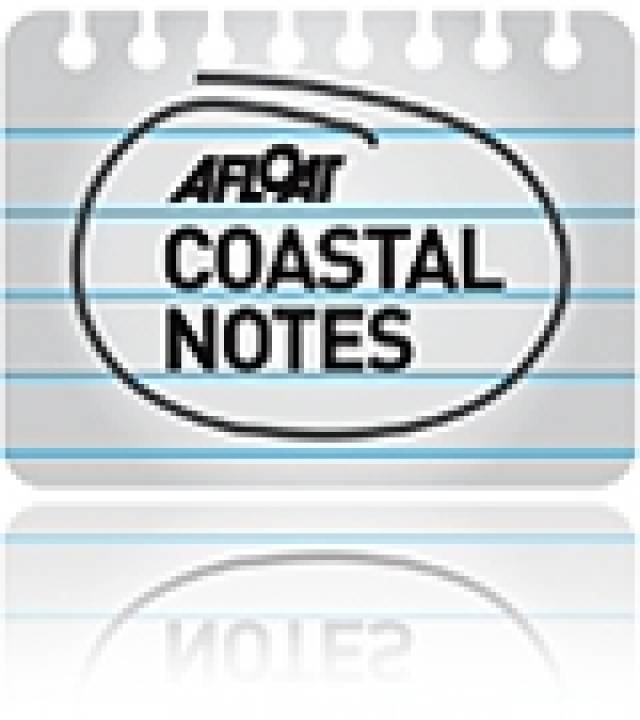#DalkeyCurrach – A brand new currach Naomh Beagnait named after the patron saint of Dalkey, made a surreal sight as she was held aloft along the main street of the south Dublin suburb and taken on a ceremonial procession to Coliemore Harbour, writes Jehan Ashmore.
The 7m (22ft) Naomh Beagnait is a Connemara racing currach which was built locally by trainees under the Begnets Boats Project led by Liz Murray and boat-builder Mark Redden.
She was built to highlight the inherent value and craftsmanship of the ancient Irish techniques of boat-building. Equally important the project was to foster and strengthen the creative, spiritual and maritime links between Dalkey town and Dalkey Island.
As Naomh Beagnait was laid onto the slipway at Coliemore Harbour, it should be noted that the small granite stone harbour completed in 1868, was where in medieval times the main landing point for vessels bringing cargoes to and fro to Dalkey, which was the principle port for Dublin until the 17th century.
Naomh Beagnait was accompanied by another currach which had rowed from Ringsend to attend the maiden voyage proceedings and where a blessing ceremony of the new boat was performed.
As the currachs set off from the slipway a crowd of well-wishers gave a rousing send-off and where Naomh Beagnait sped out of the harbour's narrow mouth and into Dalkey Sound.
A pair of kayakers greeted the Naomh Beagnait as she made her way to the island where the craft was beached on a sandy stretch close to the island's harbour.


























































